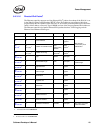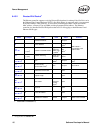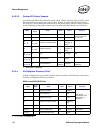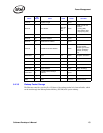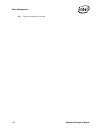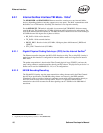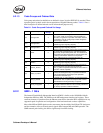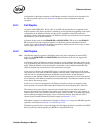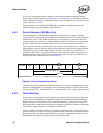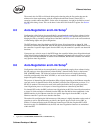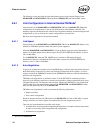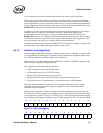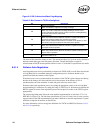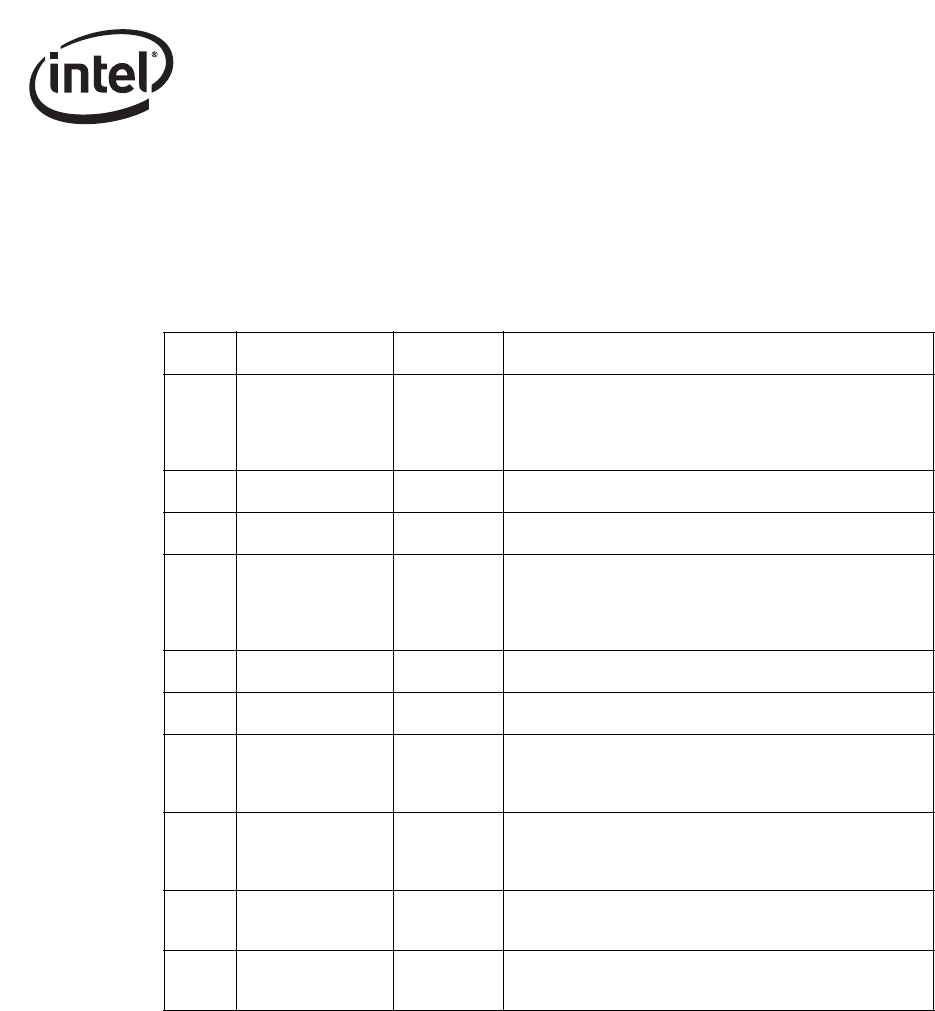
Software Developer’s Manual 157
Ethernet Interface
8.2.1.3 Code Groups and Ordered Sets
Code group and ordered set definitions are defined in clause 36 of the IEEE 802.3z standard. These
represent special symbols used in the encapsulation of Gigabit Ethernet packets. Table 8-1 lists a
brief description of defined ordered sets for informational purposes only.
Table 8-1. Code Group and Ordered Set Usage
8.2.2 GMII – 1 Gb/s
The internal Gigabit Media Independent Interface (GMII) is similar to the 10/100 Mb/s Media
Independent Interface (MII). The GMII uses the MII management interface and registers. These
common elements of operation allow the Ethernet controller to determine PHY capabilities for any
supported speed of operation and configuration of the hardware based on those capabilities.
Most of the MII and GMII signals use the same names, but the width of the RX and TX data busses
and the semantics of the associated control signals differ between MII and GMII operation. The
GMII transmit path clocking also differs significantly from MII clocking.
Code Ordered_Set
# of Code
Groups
Usage
/C/ Configuration 4
General reference to configuration ordered sets, either
/C1/ or /C2/, which is used during Auto Negotiation to
advertise & negotiate link operation information between
link partners. Last two code groups contain config base
and next page registers.
/C1/ Configuration 1 4
See /C/. Differs from /C2/ in second code group for
maintaining proper signaling disparity.
/C2/ Configuration 2 4
See /C/. Differs from /C1/ in second code group for
maintaining proper signaling disparity.
/I/ IDLE 2
General reference to IDLE ordered sets. IDLE characters
are continually transmitted by the end stations and are
replaced by encapsulated packet data. The transitions in
the IDLE stream allow the SerDes to maintain clock and
symbol synchronization between to link partners.
/I1/ IDLE 1 2
See /I/. Differs from /I2/ in second code group for
maintaining proper signaling disparity.
/I2/ IDLE 2 2
See /I/. Differs from /I1/ in second code group for
maintaining proper signaling disparity.
/R/ Carrier_Extend 1
This ordered set is used to indicate carrier extension to
the receiving PCS. It is also used as part of the
end_of_packet encapsulation delimiter as well as IPG for
packets in a burst of packets.
/S/ Start_of_Packet 1
The SPD (start_of_packet delimiter) ordered set is used to
indicate the starting boundary of a packet transmission.
This symbol replaces the last byte of the preamble
received from the MAC layer.
/T/ End_of_Packet 1
The EPD (end_of_packet delimiter) is comprised of three
ordered sets. The /T/ symbol is always the first of these
and indicates the ending boundary of a packet.
/V/ Error_Propagation 1
The /V/ ordered set is used by the PCS to indicate error
propagation between stations. This is normally intended to
be used by repeaters to indicate collisions.



